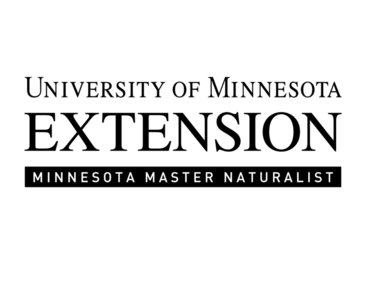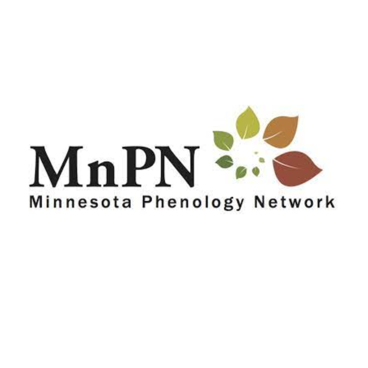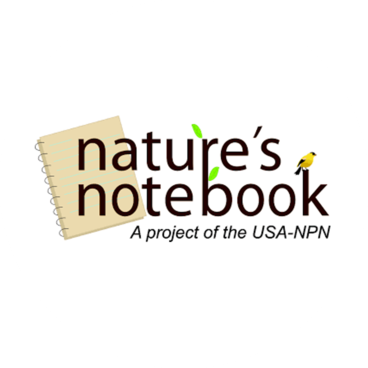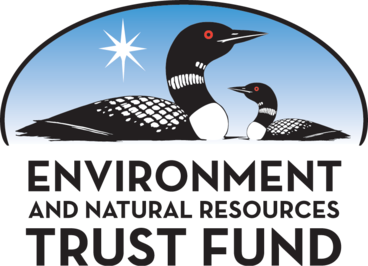Guidelines for reusing content
Creative Commons Licensed resources—especially photos and audio recordings—are featured throughout the Season Watch website. Please cite original creators when reusing content. Unless attributed to other creators, content is by Season Watch staff and volunteers. Please cite and link to Season Watch when reusing content.
How Season Watch was made
Season Watch was conceived of by staff at Northern Community Radio KAXE/KBXE and faculty in the University's Department of Forest Resources, and made possible by a grant from the Minnesota Natural Resources Trust Fund. The site's pages bring context and color to a suite of historical datasets donated by observer-members of the Minnesota Phenology Network. A small team of Minnesota Master Naturalist volunteers played an instrumental role researching and writing content.

Backyard PhenologySeason Watch builds on an open exchange of ideas with Backyard Phenology's team of artists, scientists, and scholars. Backyard Phenology works on projects that bring together art, science, and place-based observations to catalyze awareness of and action on climate change. The team hosts conversations about the changing climate in a mobile recording lab called the Climate Chaser. Photo by Jeff Schad |
ObserversSpecial thanks to naturalists across the state of Minnesota who shared historical datasets. Their observations are an invaluable resource for place-based learning and knowledge production, as well as an inspiring model showing ways to relate to Minnesota environments. For more information about the observers, visit the Season Watch Orientation Center. |
GuidanceSeason Watch staff extend gratitude to everyone who advised on species selection; user experience; Indigenous names of plants and animals; and other aspects of the Season Watch project. Ferin Davis Anderson, Josh Leonard, Hannah Panci, and others |

iNaturalist observersNearly all photos that appear on the Season Watch website were supplied by iNaturalist observers. Thanks to their keen eyes and generosity in using Creative Commons licensing, visitors to the Season Watch website can view "a year in the life of" Minnesota plants and animals. |

Minnesota Master NaturalistsMultiple authors contributed to the Season Watch website. Special thanks to the Minnesota Master Naturalist program, whose volunteers helped make phenology information accessible and appealing to broad audiences. Pamela Carlson, Paula D. M. Chantigian, Jayme Hogan, Molly Micheels, Lynsey Nass, Audrey Negro, Lisa Petersson, and others |

Minnesota Phenology NetworkSeason Watch builds on an open exchange of data, knowledge, and resources with the Minnesota Phenology Network. MNPN's founders are: Rebecca Montgomery, Chris Buyarski, John Latimer, Peter Harris, and Josh Leonard |

Nature's Notebook and the USA National Phenology NetworkSeason Watch builds on an open exchange of data, knowledge, protocol standards, and resources with Nature's Notebook and the USA National Phenology Network. |

Macaulay LibrarySeason Watch's introductory video includes audio recordings of birds provided by Macaulay Library. Common loon recorded by John P Richardson, Macaulay Library https://macaulaylibrary.org/asset/55555221 Black-capped chickadee by Cassidy Ficker, Macaulay Library https://macaulaylibrary.org/asset/198638381 |
Other public domain and Creative Commons-licensed contentLine illustrations on the Season Watch website were remixed using public domain images, primarily sourced from RawPixel.com. Field recordings in Season Watch's introductory video are by various authors (listed below) and downloaded from freesound.org and Xeno-canto.org. Downy woodpecker recorded by Aidan Place, XC552496. Accessible at www.xeno-canto.org/552496, CC BY-NC-SA 4.0 Black-capped chickadee recorded by Cassidy Ficker, Macaulay Library https://macaulaylibrary.org/asset/198638381, used with permission Northern cardinal via FreeSound.org, https://freesound.org/s/511792/, CC 0 Boreal chorus frogs via FeeSound.org, https://freesound.org/s/149352/, CC 0 Common loon recorded by Peter Ward and Ken Hall, XC601772. Accessible at www.xeno-canto.org/601772, CC BY-NC-SA 4.0 Common loon recorded by John P Richardson, Macaulay Library https://macaulaylibrary.org/asset/55555221, used with permission Cicada via FreeSound.org, https://freesound.org/s/616601/, CC 0 Sneeze recorded by Dshogan via FreeSound.org, https://freesound.org/s/147827/, CC BY-NC 3.0 Sandhill crane via FreeSound.org, https://freesound.org/s/585685/, CC 0 Trumpeter swan recorded by Bruce Lagerquist, XC518767. Accessible at www.xeno-canto.org/518767, CC BY-NC-SA 4.0 Snow buntings recorded by Paul Marvin, XC205575. Accessible at www.xeno-canto.org/205575, CC BY-NC-SA 4.0 Bees recorded by mmorast via FreeSound.org, https://freesound.org/s/192151/, CC BY 3.0 Thunder and rain recorded by InspectorJ (www.jshaw.co.uk) via FreeSound.org, CC BY 4.0 Mosquito via FreeSound.org, https://freesound.org/s/662969/, CC 0 People on the lakeside via FreeSound.org, https://freesound.org/s/528696/, CC 0 Sounds from the dock via FreeSound.org, https://freesound.org/s/584009/, CC 0 |
Season Watch team members are affiliated with Northern Community Radio and the Department of Forest Resources at the University of Minnesota.
Abbie Anderson, Staff researcher and program coordinator, University of Minnesota, Department of Forest Resources
Sarah Bignall, CEO/General Manager, Northern Community Radio (grant lead)
Stephan Carlson, Lecturer and researcher, University of Minnesota, Department of Forest Resources
Byju Govindan, Staff researcher, University of Minnesota, Department of Forest Resources
Heidi Holtan, Director of Content and Public Affairs, Northern Community Radio
John Latimer, Staff Phenologist, Northern Community Radio
Charlie Mitchell, Phenology Coordinator, Northern Community Radio
Steve Neu, IT/Broadcast Engineer, Northern Community Radio
Rebecca Montgomery, Professor, University of Minnesota, Department of Forest Resources and Fellow, Institute on the Environment

Funding for this project was provided by the Minnesota Environment and Natural Resources Trust Fund as recommended by the Legislative-Citizen Commission on Minnesota Resources (LCCMR).
The Trust Fund is a permanent fund constitutionally established by the citizens of Minnesota to assist in the protection, conservation, preservation, and enhancement of the state’s air, water, land, fish, wildlife, and other natural resources.
Currently 40% of net Minnesota State Lottery proceeds are dedicated to growing the Trust Fund and ensuring future benefits for Minnesota’s environment and natural resources.
Visit the Orientation Center for questions that are not answered below.
Why was Season Watch made? Season Watch invites you to browse profiles of plants and animals, view graphs made with historical data, and get curious about the future of Minnesota environments. Everything you see outdoors is part of larger patterns in the natural world. Explore some of those patterns using the Season Watch website.
Why does phenology matter? Phenology is an important way to understand the places where we live, the processes we depend on, and how climate change affects the world around us. Tracking phenology allows people to detect patterns of change in the natural world. In turn, seeing those patterns helps people understand how species and ecosystems are responding to global changes, such as climate change and urbanization.
Who is Season Watch for? This website is built with science students and their teachers in mind, but it will be useful for anyone interested in expanding their knowledge of Minnesota.
How will I use Season Watch? Get more meaning out of your own nature observations by exploring Season Watch's text, images, and other resources. Hone your senses and prepare your mind to observe nature's cycles. Below are a few example scenarios for using Season Watch as an educational resource:
- This is all new to me. I'd like to start looking for phenology around me. What are some plants or animals I could look for? What clues will help me understand how plants and animals use different times of year to gather energy, produce young, and rest? Suggestion: Start your exploration at the Tree of Life page.
- I just saw a hummingbird after not seeing one all winter. How is that simple observation a clue for understanding the life of a migratory bird? Suggestions: Start your exploration on the profile page for ruby-throated hummingbird, or the "Animals" section of the Tree of Life page.
- Near where I live, what kinds of plants and animals have been carefully observed in relation to the seasons? Suggestions: Check out the Minnesota Places page, or, if you live in a city or suburb, check out In the City.
- I saw a muskrat on April 3. Is that typical or unusual at this time of year?
- Compared to the past, are sandhill cranes arriving to Minnesota earlier in spring?
- When should I expect lilacs to bloom?
